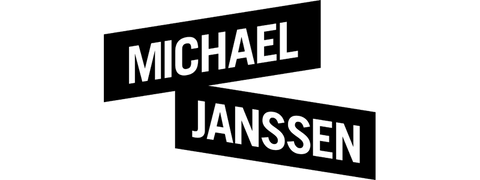Christoph Steinmeyer – Hotel Déjàvu
25 January—28 February 2006
Galerie Michael Janssen, Cologne
The Michael Janssen Gallery is pleased to announce the fourth solo exhibition by the Düsseldorf artist Christoph Steinmeyer.
Christoph Steinmeyer (born 1967) belongs to a generation of artists that undercut both the authenticity of painting and the sources of their visual exploration. Since the mid-1990s, the Düsseldorf artist has been focussing on a kind of magical symbolism, and his subjects and artistic style resemble hybrids that have entered into a dangerous, deep-rooted liaison ever since. In 2002, he produced sumptuous interiors in which the synthetic surfaces braise Steinmeyer‘s painting as if using a Bunsen burner. A year later, the artist painted ghostly portraits whose strictly symmetrical form made them resemble modern Rorschach tests in a biotechnological age. It is no coincidence that the titles of these portraits – „Pandora“, „Medusa“ and „Sphinx“ – refer to the horror and hubris of gures like Pygmalion, whose role Christoph Steinmeyer skilfully applied to the medialised ideal types portrayed by the models he chose.
Even if the parallels with Pygmalion are clear, the main impression Christoph Steinmeyer creates is that he is revitalizing painting itself, rather than his subjects. This is due to the above mentioned way in which Steinmeyer deliberately refrains from lending greater significance to the plots or „storylines“ of his paintings than they actually contain. Although his subjects are substrata of a media image world (as propagated by the advertising, lifestyle and lm industries), Steinmeyer‘s images never refer to specific sources, always preferring an individual or collective perception of them instead. Consequently, Steinmeyer‘s pieces are not amalgamations that simply transform mass media images into paintings. They are more like hackneyed versions of medially transmitted patterns and models, which Steinmeyer transforms into new - equally imaginary - ideal types through his painting. Memory thereby combines with ideas to become a potential that no longer has anything to do with what one would call actual fact.
This method of playing with magical symbolism takes a new turn in the latest group of pieces by Christoph Steinmeyer. The sources for his paintings lie in lms, which are only referred to in the names of the title roles of their heroines: „Dolores“, „Gilda“ and „Rebecca“. The figures themselves never appear and even the lm sets that once formed the characters‘ stage are no longer directly recognizable. In fact, instead of transforming motifs from celluloid freeze frames, Christoph Steinmeyer compiles cliché elements from different scenes to enrich them – like a new plot – with additional symbolically laden props. In „Dolores“, a seemingly uniform historical atmosphere is pain- fully disrupted by the presence of a ping-pong table. Targeted image-within-image constellations repeatedly break the interior‘s space-time continuum. Despite stemming from lm sources, the guitar and roulette wheel used as props in „Gilda“ suddenly open up entirely new spaces for action. Candles and cellar vaults, masks and operating utensils merge in „Violet“ to form a deceptive still life. In „Rebecca“, the grandfather clock acts as a pointer, the initials on the suitcase are revealing and the countless used handkerchiefs leave behind a sense of sinister foreboding.
Such adoption of film iconography is doubly irritating since it finds an extremely meaningful parallel in Steinmeyer‘s painting. He confronts the apparent authenticity of the black and white lm era with grisaille painting that only reveals ne, detailed chromatics after close inspection. The painting ows through the apparent beauty of such images in peristaltic waves – as if they were well known dream sequences on lm. And there are suitcases everywhere – from a large chest to a small cosmetics bag. One is tempted to open them and yet keep them shut, because the soul of such painting seems to emanate from them. It seems to brie y ll the canvas, before quickly retreating again. Like a lm. Like a dream. Finding such fantastic potential in painting is very rare. But it exists in the work of Christoph Steinmeyer. (Dr. Ralf Christofori)


Christoph Steinmeyer, Hotel Déjàvu, Installation view, 2006, Galerie Michael Janssen, Cologne

